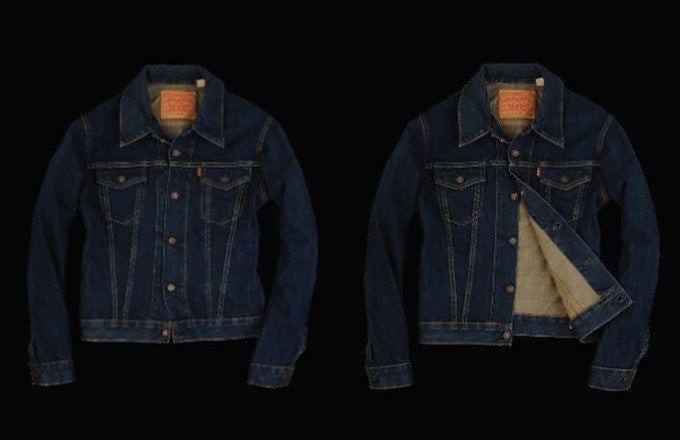The History Of The Denim Jacket
The denim jacket has long and rich history. Since its conception in the early twentieth century, it has outfitted the US military through two world wars and dressed countless famous faces, from James Dean and Marilyn Monroe to Elvis Presley. It became the jacket of choice for rebel teens in the '50s, for drop-out hippies in the '60s and was ripped at the seams by punks in the '70s. Worn by the working class and celebrities alike, the denim jacket has lasting universal appeal. Its versatility, durability and innate coolness are just a few of the reasons why it's become a true cornerstone for modern day dressing!
Shop Men's vintage denim jackets
Shop Women's vintage denim jackets
The story of this infamous jacket began with the creation of denim in Europe. Originally a fabric worn by Italian sailors, it was created in the cotton city of Genoa. The French town of Nîmes discovered the Italian material and impressed by the natural strength of the fabric, decided to replicate it. They failed, but what was created went by the name "de Nîmes". Fast forward across the pond to 1850 - the Californian Gold Rush - and a man named Levi Strauss began importing the denim fabric from France to create his famous sturdy, solid trousers, which later became known as "jeans".

The very first denim jacket came into being in the form of a work shirt around 1905, when Levi Strauss created the "Levi's Blouse," an outerwear garment intended as a companion to work trousers. The shirt was known as the 506 (also known as a Type I), and set the standard for all denim jackets to come. It had a simple design, with one front pocket, a silver buckle cinch in the back and did not include flaps covering the front pockets.
Shop Women's Levi's denim jackets
Shop Men's Levi's denim jackets
Although Levi's heritage stretches back further, in 1921, Lee introduced its' first "Railroad Jacket". Designed specifically for railroad workers, it was named the Loco Jacket and was actually tested by railroad workers. At the end of the decade, Lee also introduced the first denim jacket with a zipper closure known as the 91, which could be identified by a house silhouette on the jacket tab. In addition to the name Lee on the label, it was also inscribed with a "UNION MADE" tagline.
Encouraged by the success of the 91, Lee went on to create the Slim Jacket, the first shorter Western-style denim jacket designed for cowboys. Its slanted pockets made it easier for cowboys to reach inside whilst riding a horse and the wide waistband ensured the jacket did not fold upwards. A few years later in 1933, Lee launched one of its most iconic denim pieces to date - the Storm Rider jacket, which was a winter version of the Slim Jacket. It featured an Alaskan blanket lining, and cord collar and cuffs which were added for extra warmth.

In 1953, Levi's reworked its original Type I denim jacket into the Type II, which featured two chest pockets and the loss of the back cinch. It had added bar tacks instead of rivets on the breast pockets and waist straps. The Type III, came along shortly after in XX and became Levi's most popular model. Also known as the "trucker jacket" it was distinguished by its tailored fit and pointed flaps on its front chest pockets. Constructed from 14 oz. preshrunk denim as opposed to the earlier models' 9 oz. raw denim base, it also featured orange instead of yellow stitching.

The look of the Type III jacket has changed very little over the last 100 years or so, but there have been a few minimal alternations to the model, in the form of the "70505," "71205," and the "70518." These include changes to the label, for example if red tab reads "LEVI'S,' then it's a "Big E" jacket, meaning it dates from the '50s to around 1971. If the red tab reads "Levi's," then the jacket is from 1972 or later, and is known as a "little e" jacket.
Read more on our blog...







